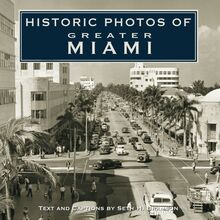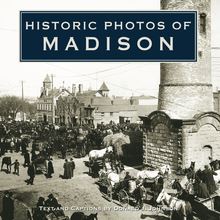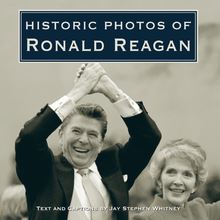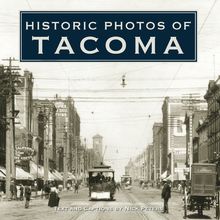Historic Photos of the Chicago World's Fair , livre ebook
211
pages
English
Ebooks
2010
Vous pourrez modifier la taille du texte de cet ouvrage
Obtenez un accès à la bibliothèque pour le consulter en ligne En savoir plus
Découvre YouScribe en t'inscrivant gratuitement
Découvre YouScribe en t'inscrivant gratuitement
211
pages
English
Ebooks
2010
Vous pourrez modifier la taille du texte de cet ouvrage
Obtenez un accès à la bibliothèque pour le consulter en ligne En savoir plus
Publié par
Date de parution
28 mai 2010
Nombre de lectures
0
EAN13
9781618584335
Langue
English
Poids de l'ouvrage
9 Mo
Chicago’s World’s Columbian Exposition, popularly called the Chicago World’s Fair, or the White City, was the largest and most spectacular world’s fair ever built. The Columbian Exposition opened on May 1, 1893, and more than 21,000,000 people visited the fair during the six months it was open to the public. The White City was a seminal event in America’s history that changed the way the world viewed Chicago.
Fortunately, the fair was documented in stunning photographs by commercial and amateur photographers. This volume tells the story of the fair from its construction in Jackson Park to its destruction by fire after the fair had closed. Photographs of the exhibition halls, state buildings, foreign buildings, indoor and outdoor exhibits, the attractions of the Midway, and the various ways to move about the fairgrounds give a sense of how visitors experienced this extraordinary time and place.
Publié par
Date de parution
28 mai 2010
Nombre de lectures
0
EAN13
9781618584335
Langue
English
Poids de l'ouvrage
9 Mo
HISTORIC PHOTOS OF
THE CHICAGO WORLD S FAIR
T EXT AND C APTIONS BY R USSELL L EWIS
The Horticulture, Choral, and Transportation buildings stand tall behind the intertwined pathways of the Wooded Island s Rose Garden.
HISTORIC PHOTOS OF
THE CHICAGO WORLD S FAIR
Turner Publishing Company
200 4th Avenue North Suite 950
Nashville, Tennessee 37219
(615) 255-2665
www.turnerpublishing.com
Historic Photos of The Chicago World s Fair
Copyright 2010 Turner Publishing Company
All rights reserved.
This book or any part thereof may not be reproduced or transmitted in any form or by any means, electronic or mechanical, including photocopying, recording, or by any information storage and retrieval system, without permission in writing from the publisher.
Library of Congress Control Number: 2009939390
ISBN: 978-1-59652-569-6
Printed in China
10 11 12 13 14 15 16 17-0 9 8 7 6 5 4 3 2 1
C ONTENTS
A CKNOWLEDGMENTS
P REFACE
B UILDING THE W HITE C ITY
B EAUTY AND G RANDEUR U NRIVALED
A W ORLD OF G OODS AND A STONISHMENT
E XHILARATING C HAOS ON THE M IDWAY
A C ITY B EAUTIFUL
N OTES ON THE P HOTOGRAPHS
Olmsted directed workers to create the Lagoon by dredging low areas of Jackson Park and using the fill to raise terraces that would support the fair buildings.
A CKNOWLEDGMENTS
This book, Historic Photos of the Chicago World s Fair , would not have been possible without the support and assistance of my colleagues at the Chicago History Museum. I am grateful to the staff of the Research Center, who helped with the logistics of retrieving, copying, and digitizing images from the collection. My thanks go to Debbie Vaughan, Michael Featherstone, Mathew Krc, and Benjamin Bertin. I am also indebted to the members of the Rights and Reproduction staff who guided me to various White City collections, gave me unfettered access to the images, and played a key role in the process of making digital files of the images in this book. Rob Medina, Bryan McDaniel, and especially Erin Tikovitsch were extremely helpful. Photographers John Alderson and Jay Crawford used the highest professional standards in their scanning and digital conversion efforts. Rosemary Adams lent her critical editorial eye to the text and improved both prose and grammar, and I am grateful to her for her kind assistance. Finally, Gary Johnson, President of the Chicago History Museum, has been supportive and encouraging of this book, and he has been an ongoing champion of the Museum s partnership with Turner Publishing. At Turner Publishing, I am grateful to Michael McCalip, Gene Bedell, Christina Huffines, and Todd Bottorff for all of their efforts to make the publication of this book possible.
This book is dedicated to Joseph H. Levy, Jr., Life Trustee of the Chicago Historical Society and extraordinary friend and supporter of the Chicago History Museum.
-------
With the exception of touching up imperfections that have accrued over time and cropping where necessary, no changes have been made to the photographs. The focus and clarity of many photographs is limited to the technology and the ability of the photographer at the time they were taken.
P REFACE
The World s Columbian Exposition of 1893 was the most photographed event in the nineteenth century. Images of the Court of Honor, the Ferris wheel, and the Midway Plaisance remain fresh in our minds, providing critical documentation for historians and a visual record that satisfies the public s thirst to imagine the experience of visiting this world s fair. Equally important, fair organizers consciously used photography to create an official image of the fair and aggressively promoted it. The fair s Department of Publicity and Promotion (the Columbian Exposition was the first world s fair to have a formal publicity operation), which operated under the able leadership of Moses P. Handy, flooded the nation with photographic images of the exposition. Taking advantage of the growing popularity of publishing halftone photographic images in newspapers and magazines, Handy brilliantly engineered a mass distribution of official photographic images that shaped Americans perceptions of the White City and encouraged them to attend the exposition.
The Columbian Exposition was also the first world s fair to restrict photography and grant an exclusive license for photography to one individual. Charles Dudley Arnold, commissioned by fair organizers to photographically document the construction of the fairgrounds, was granted with his partner Harlow D. Higinbotham the exclusive right for commercial photography on the fairgrounds. Amateur photographers, who had increased significantly in recent years thanks to the introduction of George Eastman s Kodak snapshot camera and inexpensive film and film processing, were eager to make their own photographs of the fair. They were charged $2 per day for fairground use of a handheld camera that made images no larger than four by five inches; the Streets of Cairo concession on the Midway charged an additional $1 to photograph there. Because tripods were forbidden, amateur photographers resorted to ingenious solutions to steady their cameras-placing them on tabletops, clamping them on the backs of chairs, and using railings or ledges. This combination of official photographs and amateur snapshots compose a remarkable visual record of the World s Columbian Exposition that not only captures the scale and grandeur of the exposition grounds and structures but also documents the visitors experiences and point-of-view.
The Chicago History Museum has one of the nation s richest collections of materials on the World s Columbian Exposition, and its extensive holdings of photographs are a key aspect of these remarkable documents and artifacts. Including both official views of the fair by C. D. Arnold, photographs by William Henry Jackson made for Daniel H. Burnham, portraits by James J. Gibson, and amateur snapshots (by identified and unidentified photographers), the image collection provides a powerful reminder of the importance of this event in American history. However, the photographs gathered in this volume can give the reader only a hint of what visitors experienced in the White City. The scale of the fairgrounds, the amazing array of events and programs organized daily on the fairgrounds, and the personal experiences of visitors make it impossible for any book to comprehensively document the Columbian Exposition as a place and as an event. While much of the fairgrounds is photographically documented in great detail, other parts are not, and thus despite all we know about the White City, complete knowledge about some aspects of the fair remain elusive and await future research.
Finally, this book builds on the wonderful body of scholarly works that first appeared in the 1970s and have continued to mine this rich moment in Chicago s and America s history.
Grading the site of the Fine Arts Building proceeded quicker because it was part of Lake Front Park, the north end of Jackson Park that had already been improved.
B UILDING THE W HITE C ITY
Congress selected Chicago in April 1890 to host the World s Columbian Exposition, and within months key decisions regarding its location and basic plan had been made. Daniel H. Burnham, chief of construction, and his partner, John Root, supervising architect, worked with landscape architects Frederick Law Olmsted and Henry S. Codman to transform the swampland and sand dunes of Jackson Park into a compelling design. Stretching across 685 acres, the plan called for a Court of Honor formed by a grand basin that was surrounded by five major exposition halls. To the north sat a lagoon with a large island connected by a system of canals and waterways. The goal was to create a vision of harmony and beauty through an orderly arrangement of architecture, nature, and art.
Burnham selected five East Coast architects to design the Court of Honor buildings and five Chicago firms to design the other structures. The scale of the project was daunting-nothing less than the erection of an entire city-and the engineering and architectural challenges could be met only because the buildings were temporary structures. Drawing on their expertise in wood and steel framing, Chicago workers erected sturdy structures in a minimum amount of time. The exteriors were coated with staff, a plaster-like material that allowed for the massive classical architectural edifies while hiding the steel and wooden trusses and columns. Fair directors commissioned the nation s most talented artists to create murals, sculptures, and fountains to complement the buildings and the landscaping, with the aim of giving visitors the most powerful artistic experience ever conceived.
Tens of thousands of Chicagoans joined the exposition dedication and celebration on October 21, 1892. The fairgrounds finally opened on May 1, 1893, but with unfinished buildings and landscaping. Visitors could choose among lake steamers, railroads, or coaches to reach the fairgrounds.
The exposition grounds encompassed 685 acres, just a little over one square mile. The major buildings were aligned with three major bodies of water: Lake Michigan, the Lagoon at Wooded Island, and the North Pond.
This faithful bird s-eye view reveals the scale of the fairgrounds and buildings spread across seven key areas: the Court of Honor, the Lagoon, government buildings, state buildings, the Midway Plaisance, the southeastern section, and the southwestern section.
This photograph of the Manufacturers and Liberal Arts Building site was taken in October 1891. Rather than eliminate the plentiful water on the site, Frederick Law Olmsted made it a main feature and theme of the exposition, establishing a network of basins, lagoons, canals, and ponds that linked the different parts of the grounds.
Work on the fairgrounds began in June 1891 with 5,000 to 6,000 workers.
Construction began with the mass














